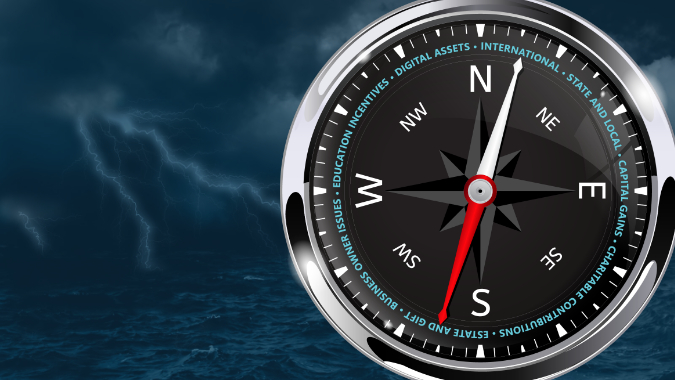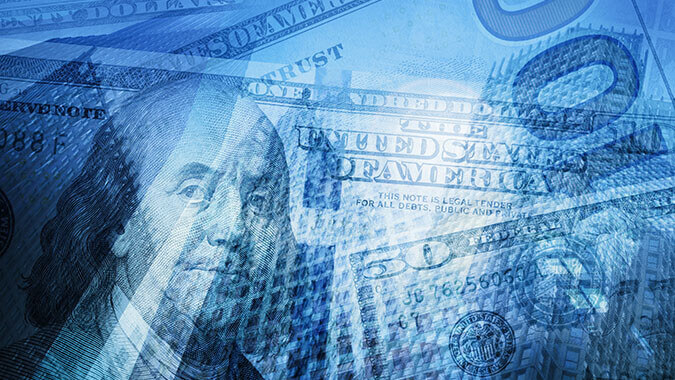
Further Clarifications Provided for Paycheck Protection Program
- Published
- Jun 25, 2020
- Topics
- Share
The Paycheck Protection Program (“PPP”) established as part of the CARES Act continues to evolve. As previously reported, a number of adjustments were made through the Paycheck Protection Program Flexibility Act (“PPPFA”), signed into law on June 5, 2020. Further guidance has been issued on June 12, 2020 ; June 16, 2020; June 22, 2020; and June 24, 2020. Highlights of the recent guidance follow below.
Loan Forgiveness Process
- To receive loan forgiveness, a borrower must complete and submit the loan forgiveness application (Small Business Administration (“SBA”) Form 3508, 3508EZ or lender equivalent) to its lender (or the lender servicing its loan). Generally, the lender will review the application and make a decision regarding loan forgiveness. The lender has 60 days from receipt of a complete application to issue a decision to SBA. If the lender determines that the borrower is entitled to forgiveness of some or all of the amount requested, the lender must request payment from SBA at the time the lender issues its decision to SBA. Subject to any review, SBA will remit the appropriate forgiveness amount to the lender, plus interest accrued through the date of payment, not later than 90 days after the lender issues its decision to SBA. If applicable, SBA will deduct Economic Injury Disaster Loan advance amounts from the forgiveness amount remitted to the lender.
- If SBA determines in the course of its review that the borrower was ineligible for the PPP loan (e.g., because the borrower lacked an adequate basis for the certification that it made in its PPP loan application), then the loan will not be eligible for loan forgiveness.
- The lender is responsible for notifying the borrower of the forgiveness amount. If only a portion of the loan is forgiven, or if the forgiveness request is denied, any remaining balance due on the loan must be repaid by the borrower on or before the maturity date of the loan. The lender is responsible for notifying the borrower of remittance by SBA of the loan forgiveness amount (or that the SBA determined that no amount of the loan is eligible for forgiveness) and the date on which the borrower’s first payment is due, if applicable. If SBA determines that the full amount of the loan is eligible for forgiveness and remits the full amount of the loan to the lender, the lender must mark the PPP loan as “paid in full.”
Deferral Period and Forgiveness
- A borrower may submit a loan forgiveness application any time on or before the maturity date of the loan – including before the end of the “covered period” (i.e., the period during which the PPP loan proceeds can be used) – if the borrower has used all of the loan proceeds for which the borrower is requesting forgiveness. If the borrower applies for forgiveness before the end of the covered period and has reduced any employee’s salaries or wages in excess of 25%, the borrower must account for the excess salary reduction for the full eight week or 24-week covered period.
- As an example, assume that a borrower is using a 24-week covered period. The borrower reduced a full-time employee’s weekly salary from $1,000 per week during the reference period to $700 per week during the covered period. The employee continued to work on a full-time basis during the covered period, with a full time equivalent (“FTE”) of 1.0. In this case, the first $250 (25% of $1,000) is exempted from the loan forgiveness reduction. The borrower seeking forgiveness must list $1,200 as the salary/wage reduction for that employee (the extra $50 weekly reduction multiplied by 24 weeks). If the borrower applies for forgiveness before the end of the covered period, it must still account for the salary reduction for the full 24-week covered period (totaling $1,200).
- If the borrower does not apply for loan forgiveness within ten months after the last day of the covered period, or if SBA determines that the loan is not eligible for forgiveness (in whole or in part), the PPP loan is no longer deferred and the borrower must begin paying principal and interest. In that case, the lender must notify the borrower of the date the first payment is due.
Payroll Costs Eligible for Loan Forgiveness
- Generally, payroll costs “paid or incurred” during the covered period are eligible for forgiveness. For purposes of loan forgiveness, the covered period is the 24-week period beginning on the date the lender disburses the PPP loan. The loan forgiveness covered period of any borrower ends no later than December 31, 2020. Alternatively, a borrower that received a PPP loan before June 5, 2020 may elect for the covered period to end eight weeks after the date of disbursement of the PPP loan. Borrowers may seek forgiveness for payroll costs for the applicable covered period beginning on either (i) the date of disbursement of the borrower’s PPP loan proceeds from the lender (i.e., the start of the covered period) or (ii) the first day of the first payroll cycle in the covered period (the “alternative payroll covered period”).
- Payroll costs are considered “paid” on the day that paychecks are distributed or the borrower originates an automatic clearing house (“ACH”) credit transaction. Payroll costs incurred during the borrower’s last pay period of the covered period or the alternative payroll covered period are eligible for forgiveness if paid on or before the next regular payroll date. Otherwise, payroll costs must be paid during the covered period (or alternative payroll covered period) to be eligible for forgiveness.
- Payroll costs are generally “incurred” on the day the employee’s pay is earned (i.e., on the day the employee worked). For employees who are not performing work but are still on the borrower’s payroll, payroll costs are incurred based on the schedule established by the borrower (typically, each day that the employee would have performed work).
- For borrowers that received a PPP loan before June 5, 2020 and elect to use an eight-week covered period, the amount of loan forgiveness for owner-employees and self-employed individuals’ payroll compensation is capped at eight weeks’ worth (8/52) of 2019 compensation or $15,385 per individual, whichever is less, in total across all businesses.
- For all other borrowers, the amount of loan forgiveness requested for owner-employees and self-employed individuals’ payroll compensation is capped at 2.5 months’ worth (2.5/12) of 2019 compensation or $20,833 per individual, whichever is less, in total across all businesses.
- C corporation owner-employees are capped by the amount of their 2019 employee cash compensation and employer retirement and health contributions made on their behalf.
- S corporation owner-employees are capped by the amount of their 2019 employee cash compensation and retirement contributions made on their behalf, but employer health insurance contributions made on their behalf cannot be separately added because those payments are already included in their employee cash compensation.
- Schedule C (i.e., sole proprietorship) and Schedule F (i.e., farming) filers are capped by the amount of their owner compensation replacement, calculated based on 2019 net profits. Retirement and health insurance contributions are included in their net self-employment income and therefore cannot be separately added to their payroll calculation.
- General partners are capped by the amount of their 2019 net earnings from self-employment (reduced by claimed IRC Sec. 179 expense deduction, unreimbursed partnership expenses and depletion from oil and gas properties) multiplied by 0.9235.
Retirement and health insurance contributions are included in their net self-employment income and therefore cannot be separately added to their payroll calculation.
Nonpayroll Costs Eligible for Loan Forgiveness
- A nonpayroll cost is eligible for forgiveness if it was (i) paid during the covered period or (ii) incurred during the covered period and paid on or before the next regular billing date, even if the billing date is after the covered period. For example, assume a borrower that received a loan before June 5, 2020 uses a 24-week covered period that begins on June 1 and ends on November 15. The borrower pays its electricity bills for June through October during the covered period and pays its November electricity bill on December 10, which is the next regular billing date. The borrower may seek loan forgiveness for its June through October electricity bills, because they were paid during the covered period. But, the borrower may also seek loan forgiveness for the portion of its November electricity bill through November 15 (the end of the 24-week covered period), because it was incurred during the covered period and paid on the next regular billing date.
Reductions to Loan Forgiveness Amount
- In calculating the loan forgiveness amount, a borrower may exclude any reduction in FTE employee headcount that is attributable to an individual employee if: (i) the borrower made a good faith, written offer to restore the reduced hours of that employee; (ii) the offer was for the same salary or wages and same number of hours as earned by that employee in the last pay period prior to the reduction in hours; (iii) the offer was rejected by the employee; and (iv) the borrower has maintained records documenting the offer and its rejection.
- Borrowers are exempted from the loan forgiveness reduction arising from a proportional reduction in FTE employees during the covered period if the borrower is able to document in good faith: (i) an inability to rehire individuals who were employees of the borrower on February 15, 2020; and (ii) an inability to hire similarly qualified individuals for unfilled positions on or before December 31, 2020. Borrowers are required to inform the applicable state unemployment insurance office of any employee’s rejected rehire offer within 30 days of the employees’s rejection of the offer. The documents that borrowers should maintain to show compliance with this exemption include, but are not limited to: (i) the written offer to hire an individual; (ii) a written record of the offer’s rejection; and (iii) a written record of efforts to hire a similarly qualified individual.
- Borrowers are also exempted from the loan forgiveness reduction arising from a reduction in the number of FTE employees during the covered period if the borrower is able to document in good faith an inability to return to the same level of business activity as the borrower was operating at before February 15, 2020, due to “direct and indirect” compliance with COVID-19 requirements and guidance. Such documentation must include copies of applicable COVID-19 requirements or guidance for each business location and relevant borrower financial records.
- “Direct and indirect” COVID-19 requirements or guidance include state and local government shutdown orders that are based in part on guidance from the U.S. Department of Health and Human Services, the Centers for Disease Control and Prevention and the Occupational Safety and Health Administration.
Changes in Eligibility for PPP Loan
- An applicant is ineligible for a PPP loan if an owner of 20% or more of the equity of the applicant
- Is presently incarcerated;
- For any felony, is subject to an indictment, criminal information, arraignment, or other means by which formal criminal charges are brought in any jurisdiction; or
- Has been convicted of, pleaded guilty or nolo contendere to, or commenced any form of parole or probation (including probation before judgment) for a felony involving fraud, bribery, embezzlement, or a false statement in a loan application or an application for federal financial assistance within the last five years or any other felony within the last year.
Observation
Recent guidance from the SBA and the Treasury Department has provided increased clarity on the administration of the Paycheck Protection Program, though frequently changing rules and interpretations have often been quite unsettling. With the final date on which PPP loans can be made – June 30 – upon us, next steps for this program and the economic response to COVID-19 going forward remain unclear. EisnerAmper will keep you informed on new developments regarding this very important subject.
Contact EisnerAmper
If you have any questions, we'd like to hear from you.
Receive the latest business insights, analysis, and perspectives from EisnerAmper professionals.











